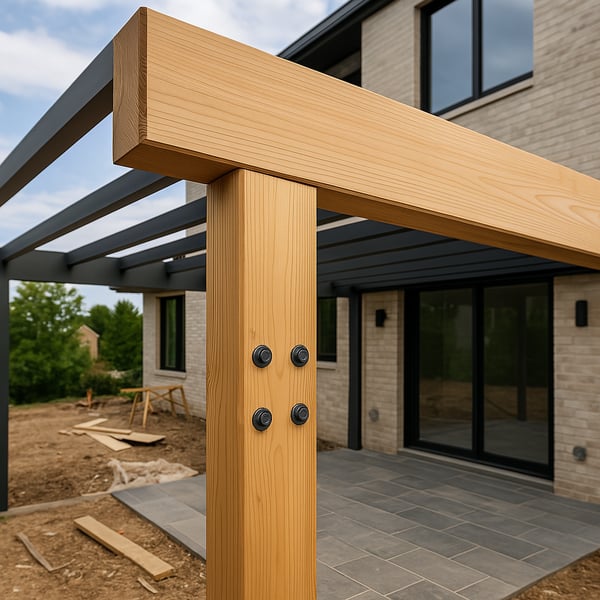
Glulam beams, short for glued laminated timber, are a type of structural engineered wood product. They are composed of several layers of dimensioned lumber bonded together with durable, moisture-resistant adhesives. This innovative construction method allows glulam beams to support substantial loads and span long distances, making them a popular choice in modern construction projects.
The manufacturing process of glulam beams involves selecting high-quality wood, drying it to the appropriate moisture content, and then bonding the layers under high pressure. This results in a beam that not only replicates the natural beauty of wood but also offers enhanced strength and stability. The flexibility in design and the ability to customize the size and shape of glulam beams make them ideal for a variety of architectural applications.
Benefits of Using Glulam Beams in Modern Construction
One of the primary benefits of using glulam beams is their ability to span large distances without the need for intermediate supports. This capability is particularly advantageous in creating open, airy spaces in both residential and commercial buildings. The aesthetic appeal of exposed wood also adds a touch of sophistication and warmth to any structure.
In addition to their visual and spatial benefits, glulam beams are environmentally friendly. They are made from renewable resources and have a lower carbon footprint compared to steel or concrete. Furthermore, the production process of glulam beams utilizes smaller pieces of wood, including those that might otherwise be considered waste, thereby maximizing the use of raw materials.
Glulam beams also offer excellent fire resistance. When exposed to fire, they char on the outside, forming an insulating layer that protects the inner core. This characteristic provides additional time for evacuation and firefighting efforts, enhancing the overall safety of the building.

Achieving Large Spans: Techniques and Examples
Achieving large spans with glulam beams requires careful planning and execution. The size of the beam, the quality of the materials, and the specific design of the structure all play crucial roles in determining the maximum span that can be achieved. For instance, a traditional glulam beam can span up to 24 feet, depending on its size and the load it needs to support.
In some projects, it may be necessary to use larger glulam beams or incorporate steel I-beams to achieve even greater spans. This hybrid approach combines the aesthetic and environmental benefits of wood with the strength and rigidity of steel. Each project is unique, and the choice of materials and techniques will depend on the specific requirements and constraints.
A notable example of glulam beams in action is a recent project in Alexandria, where five and a half by twelve glulams were used to create an opening of around 14 to 16 feet. By carefully selecting the appropriate size and type of beam, the builders were able to achieve the desired open space while maintaining structural integrity.
Comparing Glulam Beams to Steel I-Beams
When it comes to choosing between glulam beams and steel I-beams, several factors must be considered. While steel I-beams offer superior strength and can span longer distances, they lack the aesthetic appeal and environmental benefits of glulam beams. Steel beams are also more susceptible to corrosion and require additional treatments to ensure long-term durability.
Glulam beams, on the other hand, provide a natural and warm appearance that complements a wide range of architectural styles. They are also easier to work with, as they can be cut and shaped on-site without the need for specialized equipment. Additionally, glulam beams are lighter than steel, making them easier to transport and install.
Ultimately, the choice between glulam beams and steel I-beams will depend on the specific needs of the project. For those seeking a balance between aesthetics, environmental sustainability, and structural performance, glulam beams are often the preferred choice.
Technical Considerations for Incorporating Glulam Beams
Incorporating glulam beams into a construction project requires careful attention to several technical considerations. The first step is to determine the appropriate size and type of beam based on the load it will support and the span it needs to cover. This involves detailed calculations and an understanding of the material properties of the beam.
Another important consideration is the method of connection. Glulam beams can be connected using a variety of techniques, including mechanical fasteners, adhesives, and steel connectors. The choice of connection method will depend on the specific requirements of the project and the desired aesthetic outcome.
Moisture control is also critical when working with glulam beams. Although the adhesives used in glulam beams are moisture-resistant, prolonged exposure to high humidity or water can still affect their performance. Proper sealing and maintenance are essential to ensure the longevity and structural integrity of the beams.

Case Study: Successful Projects Utilizing Glulam Beams
One of the most compelling ways to understand the benefits of glulam beams is through real-world examples. A recent project in Alexandria serves as an excellent case study. The design called for an open space with a span of approximately 14 to 16 feet. By using five and a half by twelve glulams, the builders were able to achieve this span without compromising on aesthetics or structural integrity.
Another notable project involved using glulam beams to create a large, open-plan living area in a residential home. The homeowner wanted a space that felt both expansive and inviting. By incorporating glulam beams, the design team was able to create a stunning open space that met the client's specifications and provided a warm, natural ambiance.
These case studies highlight the versatility and effectiveness of glulam beams in modern construction. Whether used in residential homes, commercial buildings, or public structures, glulam beams offer a unique combination of strength, beauty, and sustainability that is hard to match with other materials.
In conclusion, glulam beams are a sophisticated, trustworthy, and innovative choice for modern construction projects. Their ability to span large distances, coupled with their aesthetic appeal and environmental benefits, makes them an ideal material for creating open, inviting spaces. By understanding the technical aspects and exploring real-world applications, builders and architects can confidently incorporate glulam beams into their designs, maximizing both functionality and beauty.
Design Builders is a recognized leader in the design and construction of high-end screened porches, custom decks, and outdoor kitchens throughout the DMV region. With a focus on innovation, quality, and craftsmanship, we turn outdoor living dreams into reality.


